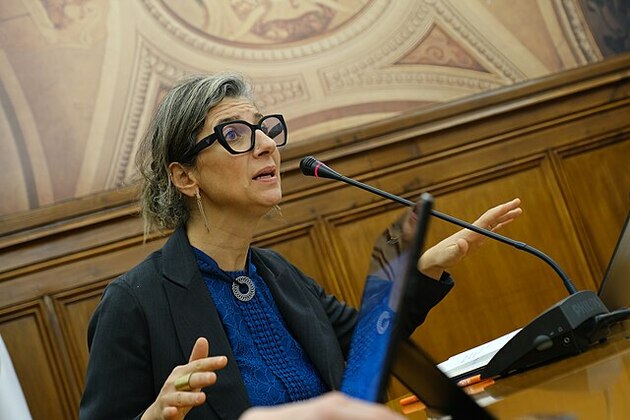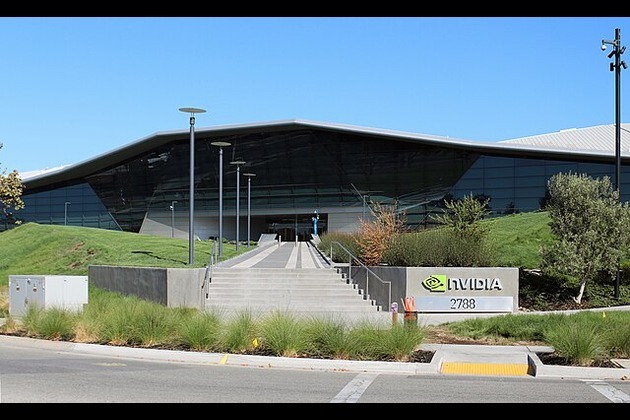Study investigates how people know they are tired
ANI
24 Nov 2021, 16:48 GMT+10

Jerusalem [Israel], November 24 (ANI): Researchers have moved a step forward towards solving why do we need to sleep and the benefits of sleeping.
The findings of the study were published in the journal 'Molecular Cell'.
The study was led by Professor Lior Appelbaum, of Bar-Ilan's Goodman Faculty of Life Sciences and Gonda (Goldschmied) Multidisciplinary Brain Research Center, along with postdoctoral researcher Dr David Zada.
When we are awake, homeostatic sleep pressure (tiredness) builds up in the body. This pressure increases the longer we stay awake and decreases during sleep, reaching a low after a full and good night's sleep.
During waking hours, DNA damage accumulates in neurons. This damage can be caused by various elements, including UV light, neuronal activity, radiation, oxidative stress, and enzymatic errors. During sleep and waking hours, repair systems within each cell correct DNA breaks.
However, DNA damage in neurons continues to accumulate during wakefulness, and excessive DNA damage in the brain can reach dangerous levels that must be reduced. The study revealed that a sleep recruit DNA repair system promotes efficient repair so that the day can begin anew.
In a series of experiments, the researchers sought to determine whether the buildup of DNA damage could be the "driver" that triggers homeostatic pressure and the subsequent sleep state. Using irradiation, pharmacology and optogenetics, they induced DNA damage in zebrafish to examine how it affects their sleep. With their absolute transparency, nocturnal sleep, and a simple brain that is similar to humans, zebrafish are a perfect organism in which to study this phenomenon.
As DNA damage was increased, the need for sleep also increased. The experiment suggested that at some point the accumulation of DNA damage reached a maximum threshold, and increased sleep (homeostatic) pressure to such an extent that the urge to sleep was triggered and the fish went to sleep. The ensuing sleep facilitated DNA repair, which resulted in reduced DNA damage.
There's nothing like a good night's sleep. After verifying that accumulated DNA damage is the force that drives the sleep process, the researchers were eager to learn whether it's possible to determine the minimum time zebrafish need to sleep in order to reduce sleep pressure and DNA damage.
Since, like humans, zebrafish are sensitive to light interruption, the dark period was gradually decreased during the night. After measuring DNA damage and sleep, it was determined that six hours of sleep per night is sufficient to reduce DNA damage. Astoundingly, after less than six hours of sleep, DNA damage was not adequately reduced, and the zebrafish continued to sleep even during daylight.
What is the mechanism in the brain that tells us we need to sleep in order to facilitate efficient DNA repair? The protein PARP1, which is part of the DNA damage repair system, is one of the first to rapidly respond. PARP1 marks DNA damage sites in cells and recruits all relevant systems to clear out DNA damage.
In accordance with DNA damage, clustering of PARP1 in DNA break sites increases during wakefulness and decreases during sleep. Through genetic and pharmacological manipulation, the overexpression and knockdown of PARP1 revealed not only that increasing PARP1 promoted sleep, but also increased sleep-dependent repair. Conversely, inhibition of PARP1 blocked the signalfor DNA damage repair. As a result, the fish weren't fully aware that they were tired, didn't go to sleep, and no DNA damage repair occurred.
To strengthen the findings on zebrafish, the role of PARP1 in regulating sleep was further tested on mice, using EEG, in collaboration with Professor Yuval Nir from Tel Aviv University. Just like with zebrafish, the inhibition of PARP1 activity reduced the duration and quality of non-rapid eye movement (NREM) sleep.
"PARP1 pathways are capable of signalling the brain that it needs to sleep in order for DNA repair to occur," said Professor Appelbaum.
In a previous study, Professor Appelbaum and team used 3D time-lapse imaging to determine that sleep increases chromosome dynamics. Adding the current piece to the puzzle, PARP1 increases sleep and chromosome dynamics, which facilitates the efficient repair of DNA damage accumulated during waking hours. The DNA maintenance process may not be efficient enough during waking hours in neurons, and therefore requires an offline sleep period with reduced input to the brain in order to occur.
These latest findings provide a detailed description of the "chain of events" explaining sleep on the single-cell level. This mechanism may explain the link between sleep disturbances, ageing and neurodegenerative disorders, such as Parkinson's and Alzheimer's. Professor Appelbaum believes that future research will help to apply this sleep function to other animals ranging from lower invertebrates to, eventually, humans. (ANI) Share
Share
 Tweet
Tweet
 Share
Share
 Flip
Flip
 Email
Email
Watch latest videos
Subscribe and Follow
Get a daily dose of Israel Herald news through our daily email, its complimentary and keeps you fully up to date with world and business news as well.
News RELEASES
Publish news of your business, community or sports group, personnel appointments, major event and more by submitting a news release to Israel Herald.
More InformationInternational
SectionU.S. military, China, Russia in Space race
President Donald Trump's plans to build a space-based Golden Dome missile defense shield have drawn immediate criticism from China,...
Trump wins $16 million settlement from Paramount over CBS Harris edit
NEW YORK CITY, New York: Paramount has agreed to pay US$16 million to settle a lawsuit brought by U.S. President Donald Trump over...
British PM faces major party revolt over welfare reforms
LONDON, U.K.: British Prime Minister Keir Starmer won a vote in Parliament this week to move ahead with changes to the country's welfare...
White House meeting between Trump, Netanyahu on July 7
WASHINGTON, D.C.: President Donald Trump will meet Israeli Prime Minister Benjamin Netanyahu at the White House on Monday. President...
Over 60 companies named in UN report on Israel-Gaza conflict
GENEVA, Switzerland: A new United Nations report alleges that dozens of global corporations are profiting from and helping sustain...
UK lawmakers desigate protest group as terrorist organization
LONDON, UK - Lawmakers in the United Kingdom have voted overwhelmingly to proscribe the direct-action group Palestine Action as a terrorist...
Business
SectionStocks worldwide struggle to make ground Friday with Wall Street closed
LONDON UK - U.S. stock markets were closed on Friday for Independence Day. Global Forex Markets Wrap Up Friday with Greeback Comeback...
Nvidia briefly tops Apple’s record in AI-fueled stock rally
SANTA CLARA, California: Nvidia came within a whisker of making financial history on July 3, briefly surpassing Apple's all-time market...
ICE raids leave crops rotting in California, farmers fear collapse
SACRAMENTO, California: California's multibillion-dollar farms are facing a growing crisis—not from drought or pests, but from a sudden...
Trump signals progress on India Trade, criticizes Japan stance
WASHINGTON, D.C.: President Donald Trump says the United States could soon reach a trade deal with India. He believes this deal would...
Grammarly acquires Superhuman to boost AI workplace tools
SAN FRANCISCO, California: Grammarly is doubling down on AI-powered productivity tools with the acquisition of Superhuman, a sleek...
Standard and Poor's 500 and and Nasdaq Composite close at record highs
NEW YORK, New York -U.S. stock markets closed with broad gains on Thursday, led by strong performances in U.S. tech stocks, while European...













